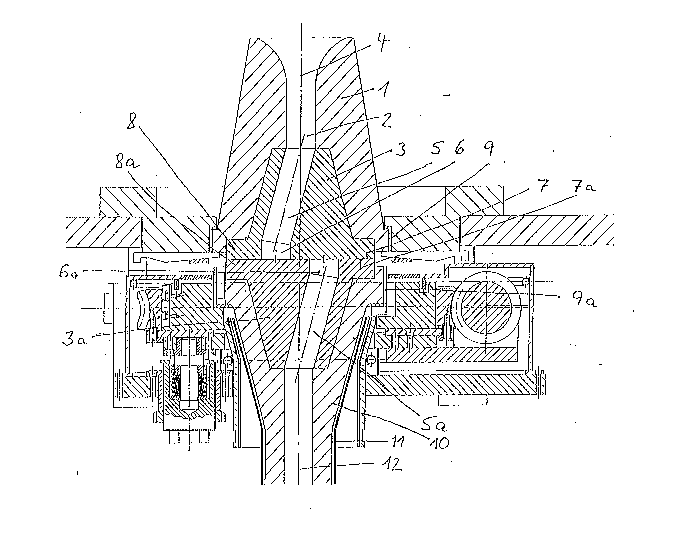Une partie des informations de ce site Web a été fournie par des sources externes. Le gouvernement du Canada n'assume aucune responsabilité concernant la précision, l'actualité ou la fiabilité des informations fournies par les sources externes. Les utilisateurs qui désirent employer cette information devraient consulter directement la source des informations. Le contenu fourni par les sources externes n'est pas assujetti aux exigences sur les langues officielles, la protection des renseignements personnels et l'accessibilité.
L'apparition de différences dans le texte et l'image des Revendications et de l'Abrégé dépend du moment auquel le document est publié. Les textes des Revendications et de l'Abrégé sont affichés :
| (12) Demande de brevet: | (11) CA 2145279 |
|---|---|
| (54) Titre français: | FERMOIR TOURNANT POUR RECIPIENT SERVANT A LA METALLURGIE |
| (54) Titre anglais: | ROTARY CLOSURE FOR METALLURGICAL VESSELS |
| Statut: | Réputée abandonnée et au-delà du délai pour le rétablissement - en attente de la réponse à l’avis de communication rejetée |
| (51) Classification internationale des brevets (CIB): |
|
|---|---|
| (72) Inventeurs : |
|
| (73) Titulaires : |
|
| (71) Demandeurs : |
|
| (74) Agent: | KIRBY EADES GALE BAKER |
| (74) Co-agent: | |
| (45) Délivré: | |
| (86) Date de dépôt PCT: | 1993-08-24 |
| (87) Mise à la disponibilité du public: | 1994-03-31 |
| Requête d'examen: | 1995-06-12 |
| Licence disponible: | S.O. |
| Cédé au domaine public: | S.O. |
| (25) Langue des documents déposés: | Anglais |
| Traité de coopération en matière de brevets (PCT): | Oui |
|---|---|
| (86) Numéro de la demande PCT: | PCT/EP1993/002265 |
| (87) Numéro de publication internationale PCT: | EP1993002265 |
| (85) Entrée nationale: | 1995-03-22 |
| (30) Données de priorité de la demande: | ||||||
|---|---|---|---|---|---|---|
|
The invention relates to a rotary closure for the discharge
opening in the bottom of a metallurgical vessel.
The characterizing feature of the invention is that inserted in
the lower end portion of its discharge block (1) is a discharge
sleeve (3) which has a pouring channel (5) extending at an
inclination and against whose lower horizontal end face (7) a
sleeve (3a) shaped identically laterally inverted to the
discharge sleeve (3) bears via its complementary end face (7a),
the sleeve (3a) being inserted in a drain (10) disposed to rotate
around a vertical axis (4) in relation to the fixed discharge
block (1), and in a predetermined rotated position (opening
position) of the drain (10) the opposite openings of the pouring
channels (5, 5a) in the sleeves (3, 3a) are in alignment, while
in other rotated positions (closure positions) said openings are
completely or partially separated from one another.
Note : Les revendications sont présentées dans la langue officielle dans laquelle elles ont été soumises.
Note : Les descriptions sont présentées dans la langue officielle dans laquelle elles ont été soumises.

2024-08-01 : Dans le cadre de la transition vers les Brevets de nouvelle génération (BNG), la base de données sur les brevets canadiens (BDBC) contient désormais un Historique d'événement plus détaillé, qui reproduit le Journal des événements de notre nouvelle solution interne.
Veuillez noter que les événements débutant par « Inactive : » se réfèrent à des événements qui ne sont plus utilisés dans notre nouvelle solution interne.
Pour une meilleure compréhension de l'état de la demande ou brevet qui figure sur cette page, la rubrique Mise en garde , et les descriptions de Brevet , Historique d'événement , Taxes périodiques et Historique des paiements devraient être consultées.
| Description | Date |
|---|---|
| Le délai pour l'annulation est expiré | 1997-08-25 |
| Demande non rétablie avant l'échéance | 1997-08-25 |
| Réputée abandonnée - omission de répondre à un avis sur les taxes pour le maintien en état | 1996-08-26 |
| Toutes les exigences pour l'examen - jugée conforme | 1995-06-12 |
| Exigences pour une requête d'examen - jugée conforme | 1995-06-12 |
| Demande publiée (accessible au public) | 1994-03-31 |
| Date d'abandonnement | Raison | Date de rétablissement |
|---|---|---|
| 1996-08-26 |
Les titulaires actuels et antérieures au dossier sont affichés en ordre alphabétique.
| Titulaires actuels au dossier |
|---|
| MANNESMANN AG |
| DOLOMITWERKE GMBH |
| Titulaires antérieures au dossier |
|---|
| HANS BUTZ |
| HEINZ-JURGEN LEHMKUHLER |